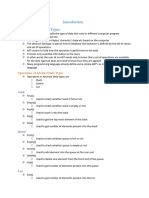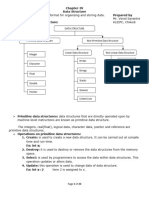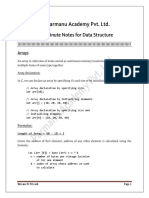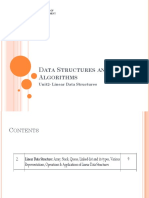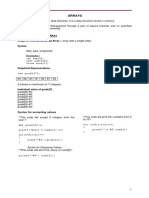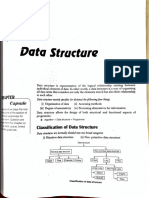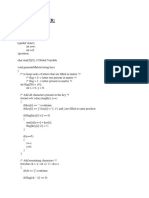0% found this document useful (0 votes)
34 views101 pagesUnit I
- Data structures allow for the organization and storage of data in memory in a way that considers the relationships between elements. They affect both the structural and functional design of programs.
- Data structures are either primitive, using basic data types directly operated on by the CPU, or non-primitive, derived from primitive types. Linear structures like stacks, queues, and linked lists store elements in a linear sequence while non-linear structures like trees and graphs exhibit more complex relationships.
- Common operations on data structures include traversal, insertion, deletion, searching, and sorting. Arrays provide a simple way to group homogeneous data but are static in size while linked lists are dynamic. Stacks follow LIFO order and are useful for
Uploaded by
Mugizhan NagendiranCopyright
© © All Rights Reserved
We take content rights seriously. If you suspect this is your content, claim it here.
Available Formats
Download as PDF, TXT or read online on Scribd
0% found this document useful (0 votes)
34 views101 pagesUnit I
- Data structures allow for the organization and storage of data in memory in a way that considers the relationships between elements. They affect both the structural and functional design of programs.
- Data structures are either primitive, using basic data types directly operated on by the CPU, or non-primitive, derived from primitive types. Linear structures like stacks, queues, and linked lists store elements in a linear sequence while non-linear structures like trees and graphs exhibit more complex relationships.
- Common operations on data structures include traversal, insertion, deletion, searching, and sorting. Arrays provide a simple way to group homogeneous data but are static in size while linked lists are dynamic. Stacks follow LIFO order and are useful for
Uploaded by
Mugizhan NagendiranCopyright
© © All Rights Reserved
We take content rights seriously. If you suspect this is your content, claim it here.
Available Formats
Download as PDF, TXT or read online on Scribd
/ 101












